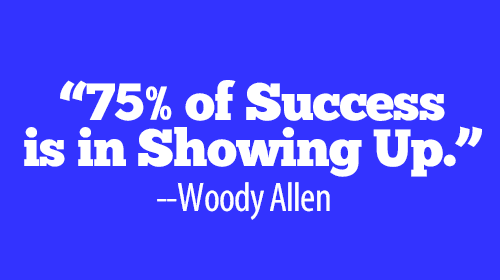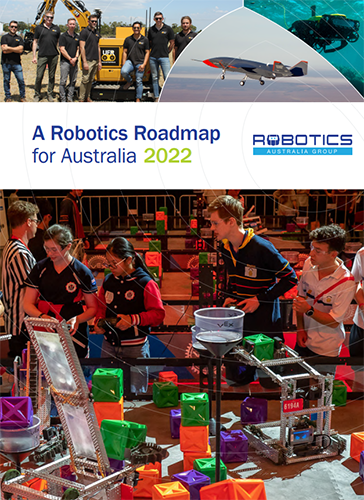Make a contribution
Want to make a real contribution to a national robotics program? One where what you think and know is really valued? And maybe in the process even discover for yourself a new career in a new land that’s hoping you’ll come and knock on its front door?
Seem exciting and inviting? Well, the place is Australia. Australia is hungry to return to its former global powerhouse status in robotics and is open to anything.
So, if you’ve been laid off or turned off by work lately, or find yourself dreaming of remote jobs from Fiji, Australia may well be a great choice. The country sure as hell wants you…or your ideas or both; and in readiness is a former robotics ecosystem of great esteem that fell on hard times and is now trying to make a comeback. What could be better than being part of a team that revives it all?
The great fall
In 2012, Australia’s prowess in field robotics was world-dominating and its researchers in demand at most every tradeshow and conference worldwide.
In those days, Australian robotics and roboticists were everywhere and welcome.
Most all of it went into eclipse in 2014. The video below from 2014 says it all. Sadly morose, almost creepy, the news program depicts the descent of Australia’s once-proud tech scene into a shadow of its former self. The “budget repairs” of then-Prime Minister Tony Abbott—over $100 million less for tech—helped initiate the kill-off of Australian robotics as we knew it, beginning with the budget gutting of CSIRO, officially the Commonwealth Scientific and Industrial Research Organization. CSIRO is Australia’s premier R&D facility where, “we apply our research to inform policy, develop new industries and evolve existing sectors ensuring success into the future.” Not too much of that was wanted circa 2014; or so most everyone thought. It turned out to be a critical year in global robotics!
At the time, CSIRO chairman and former Australian of the Year, Simon McKeon, conceded the cuts had led to reduced staffing in virtually every part of the organization.
As McKeon put it: “Undeniably over this last year or so, we’ve also had to farewell scientists who are globally relevant – people who we would prefer not to have said goodbye to.”
Grim Times 2014
The devastating effect on Australian robotics was profound. Soon thereafter, it seemed like Australia was more widely known for the Melbourne Shuffle Dance than for robotics.
Even as late as 2017, headlines like these were frequent:
Automation: Why does Australia still struggle to be a world leader?
Is culture to blame for a lack of innovation in robotics?
CSIRO has ‘cut into the bone’ to implement successive government cuts.
Not helping the cause was the collapse of Australia’s auto industry: Toyota, GM and Ford closed up shop and went home.
Getting back up again
These days, according to Australia, all that grief is a passing memory. And that’s where opportunity enters.
The government is back in play big time, especially since the pandemic recently hurled the world into a robot frenzy that has since jacked up a few notches with artificial intelligence/machine learning getting extra friendly with robots.
Robots and mobile robots are at the top of everyone’s checklist. Sales are booming and global R&D is on a non-stop shuffle dance.
Check this out: The National Robotics Strategy: Discussion Paper, where it reads:
“We want your views to inform a National Robotics Strategy. The Australian Government is developing this strategy to promote the responsible production and adoption of robotics and automation technologies.”
This massive, continent-size country of 25 million citizens is looking for automation to deliver Australia $2.2 trillion over the next 15 years; and robotics is a massive part of that forecast. The potential of robot-driven automation is staggering.
Return to glory after massive cuts
Mining, agriculture, and subsea would seem to be strong suits for an Australian comeback. Mining has always been strong; agriculture could be rekindled again; and subsea would be advantageous for a gigantic island with 21,000 miles of Pacific coastline and over 1,000 estuaries.
For agriculture, not far away is China with an $11 billion floriculture industry that is all manual! Not a single robot toils for its over 300,000 cut-flower farmers.
Mining, agriculture, and subsea could flourish almost anywhere in Asia, and Australia’s chances for success, given its past prominence, are high.
If in doubt, test drive A Robotics Roadmap for Australia 2022. It covers maybe too much, for a country making a comeback, but you’ll find something that perks up your interests for sure.
Feeling lazy? Watch this video with Professor Stefan Williams, Head of the School of Aerospace, Mechanical and Mechatronic Engineering at the University of Sydney. He provides a tour of the Australian Centre for Field Robotics.
And ChatGPT Gives the All-Clear Signal!

Thailand: Thailand has a significant agricultural sector, and there is increasing interest in adopting robotics and automation technologies to improve productivity and efficiency. Australian expertise and technology in field and agricultural robotics could find opportunities in areas such as precision farming, crop monitoring, and autonomous machinery.
Vietnam: Vietnam is one of the largest agricultural producers in Southeast Asia, and the government is actively promoting modernization and mechanization of its agricultural practices. Australian expertise and technology in field and agricultural robotics could contribute to enhancing farming techniques, automated harvesting, and pest management solutions.
Malaysia: Malaysia has a diverse agricultural sector that encompasses palm oil, rubber, fruits, and vegetables. There is growing interest in adopting advanced technologies to improve yields and reduce labor dependency. Australian expertise and technology in field and agricultural robotics could help in areas such as automated plantations, smart irrigation systems, and precision agriculture.
Indonesia: Indonesia has a large agricultural industry, and there is a need for innovative solutions to address productivity challenges. The country has diverse crops, including rice, coffee, cocoa, and palm oil, which could benefit from Australian expertise and technology in field and agricultural robotics for tasks like planting, harvesting, and monitoring.
Philippines: The Philippines has a significant agricultural sector and is one of the world’s largest rice producers. The country is actively exploring agricultural modernization and mechanization. Australian expertise and technology in field and agricultural robotics could contribute to improved cultivation techniques, efficient harvesting, and crop monitoring systems.
Singapore: While Singapore may not have extensive agricultural land, it is a hub for research and development in the region. Australian expertise and technology in field and agricultural robotics could find opportunities in urban farming, vertical farming, and the development of advanced sensor technologies for agriculture.
It’s essential to consider each country’s specific agricultural practices, regulatory frameworks, and market conditions when targeting them with Australian expertise and technology in field and agricultural robotics. Collaborating with local partners, industry associations, and government agencies can help navigate the market and regulatory landscape effectively.
EDITOR’S NOTE: Notice how remarkably similar–almost repetitious to a fault–GPT’s answers get, but that’s exactly to the point and integral to the needs in Southeast Asia’s agriculture.




